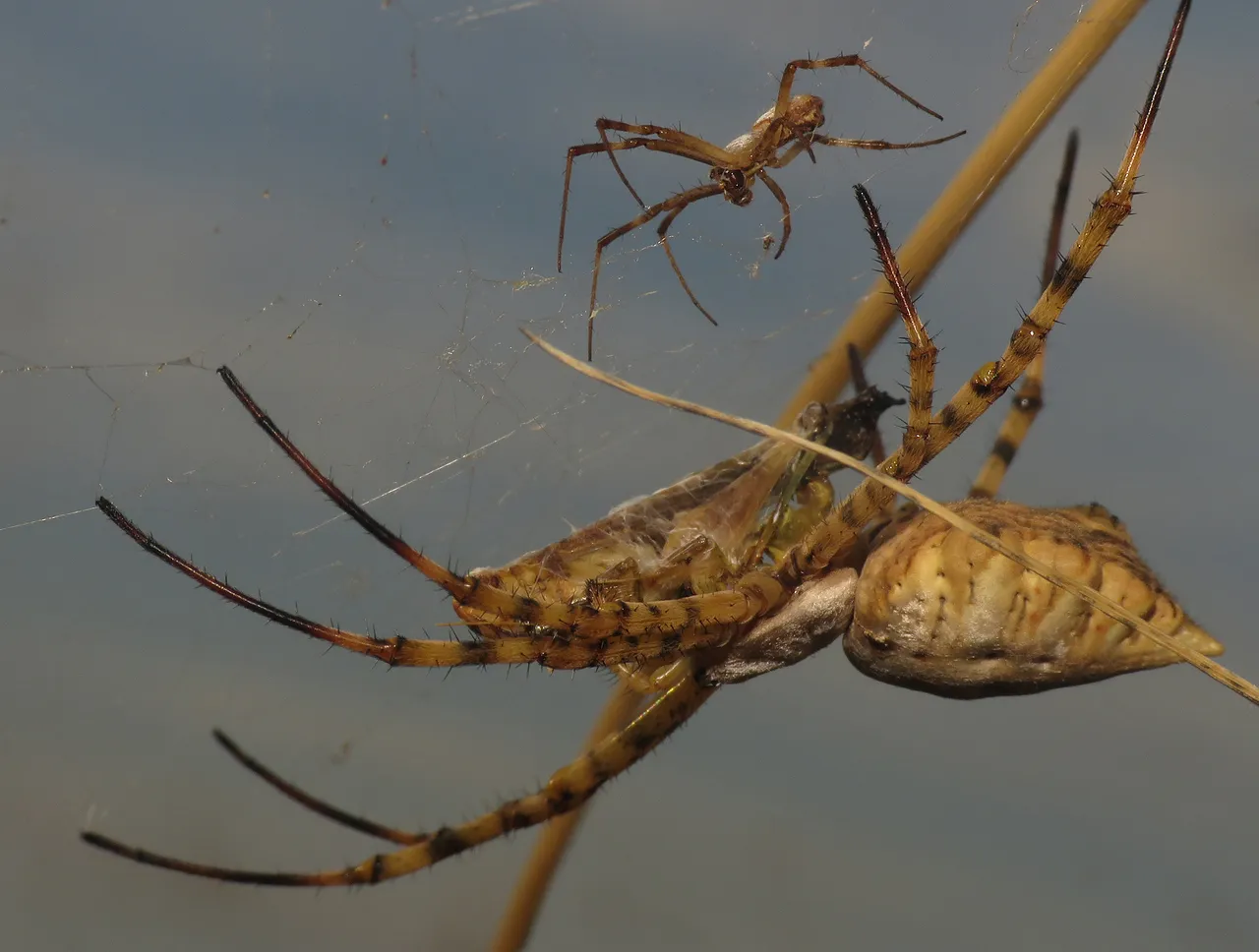I spent many sunny hours of summer 2021 walking along the seashore and across the coastal meadows in search of interesting plants, insects, and spiders. In this post, I'll show you some of that summer stuff from my area.
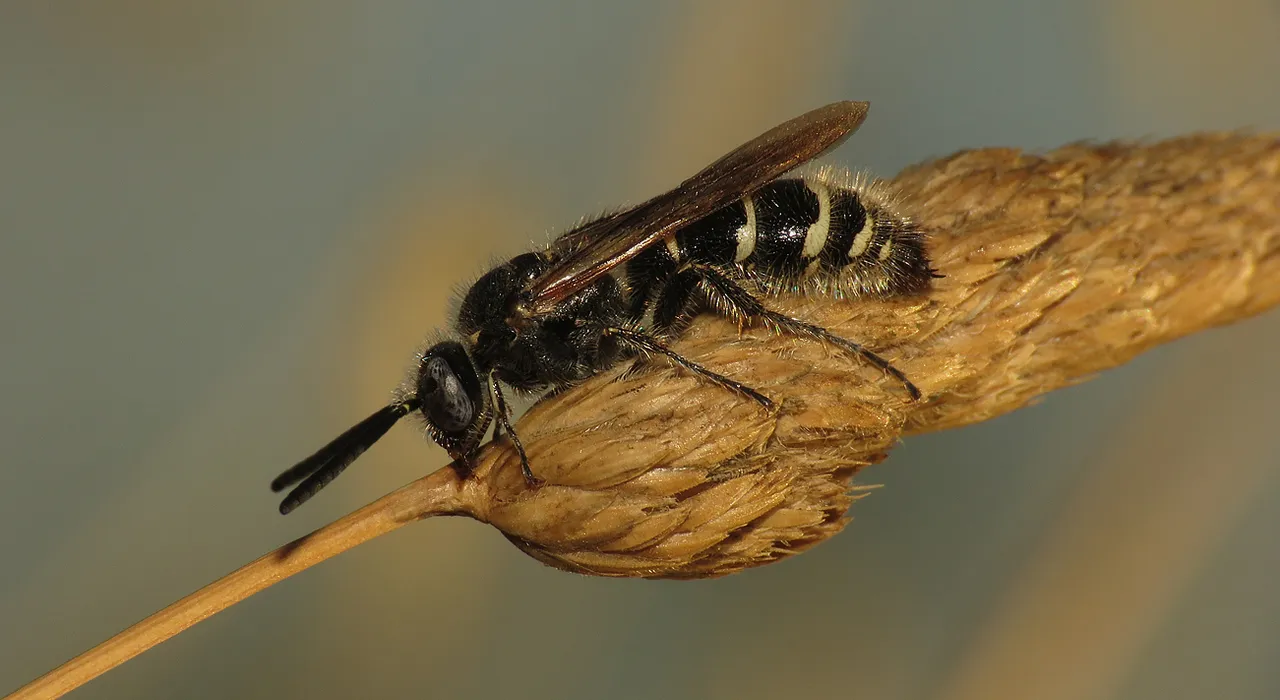
In this opening photograph, you can see a hairy wasp from the Scoliidae family. I can't tell you the exact species, but the genus is surely Micromeriella. The evening was near and many wasp species were ready to take a rest on the dry grass of the meadow.
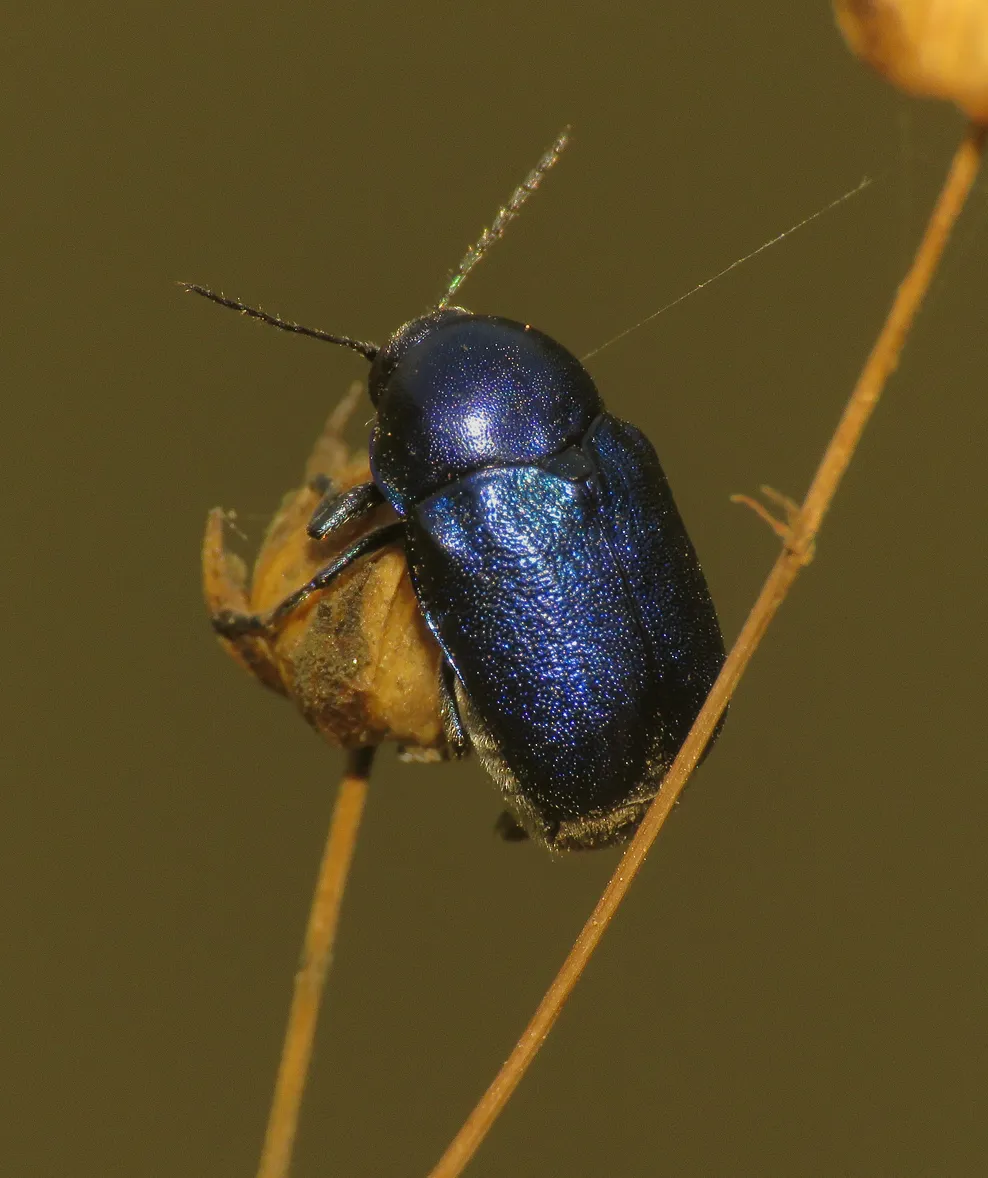
This beautiful, shiny leaf beetle was photographed a couple of minutes later, not far from there. This species, the Cryptocephalus hypochaeridis, is usually metallic green. That's the prevalent color. The blue version is pretty rare in my experience.

This is another wasp from the Scoliidae family. The Megascolia maculata.
This big species is commonly known as the Mammoth wasp. After a day of feeding on flowers, the wasp is getting ready to rest on the tall Avena fatua grass that covers large areas of the coastal meadows. In these two shots, one of which was taken with the flash - the other without, you can also see the Neoscona adianta spider. Above the wasp, on the top of the grass.
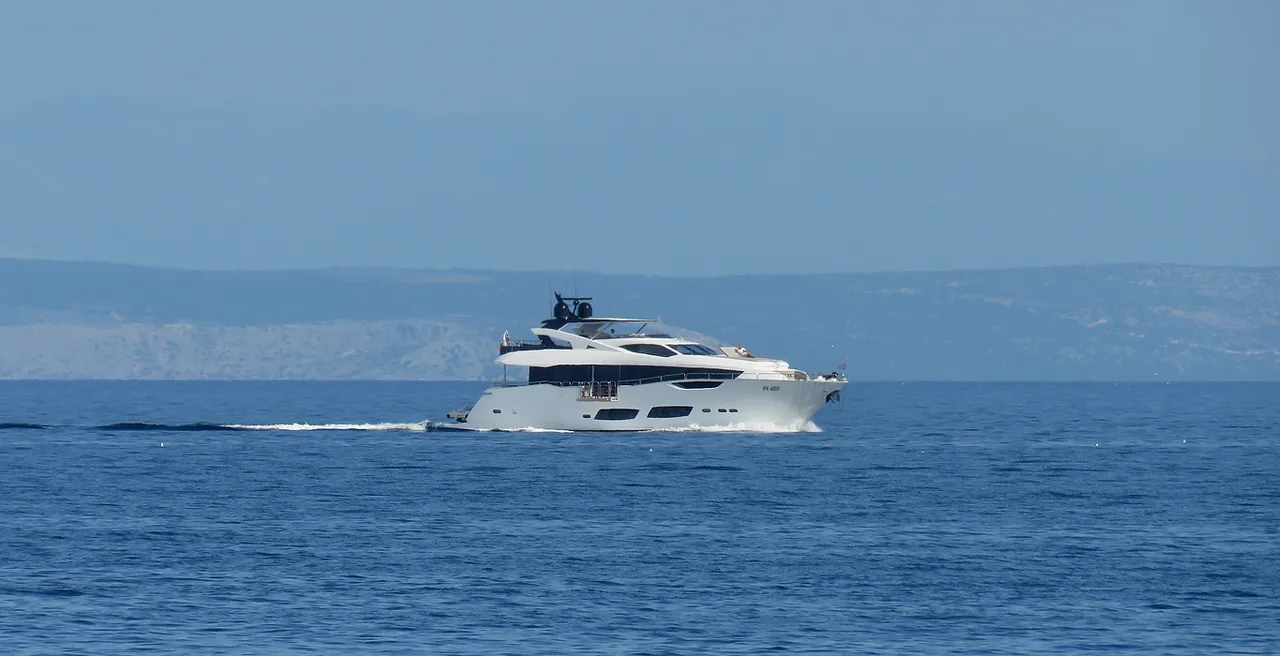
The main focus is always on the plants and animals during these summer ramblings, but I do take a look at the nearby sea from time to time.

Here you can see an elegant, small yacht passing across the bay.
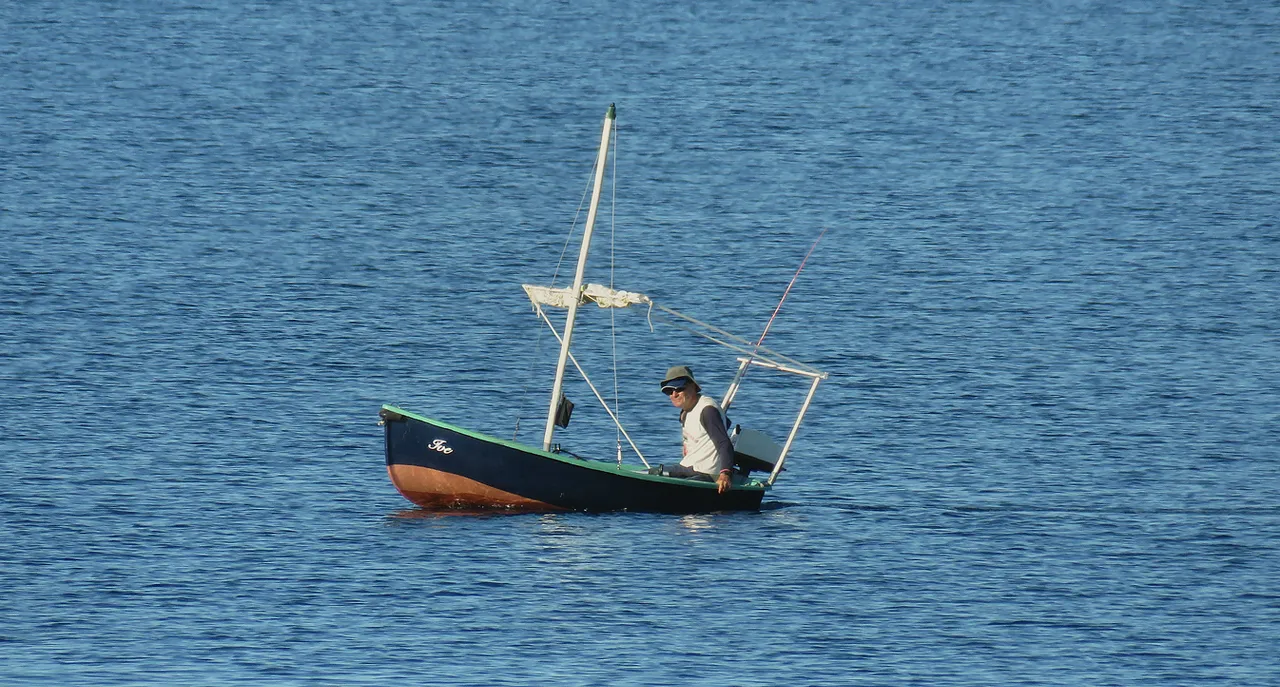
A nice variety of boats can be seen in summer.
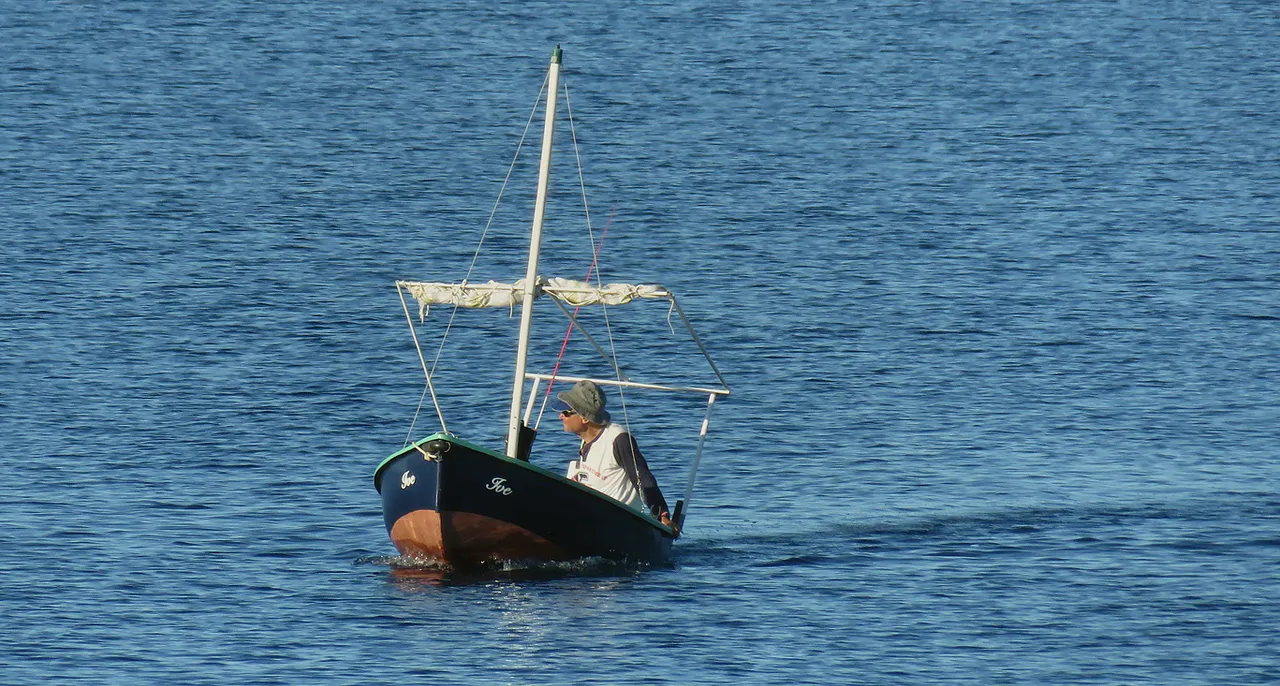
Big and small.
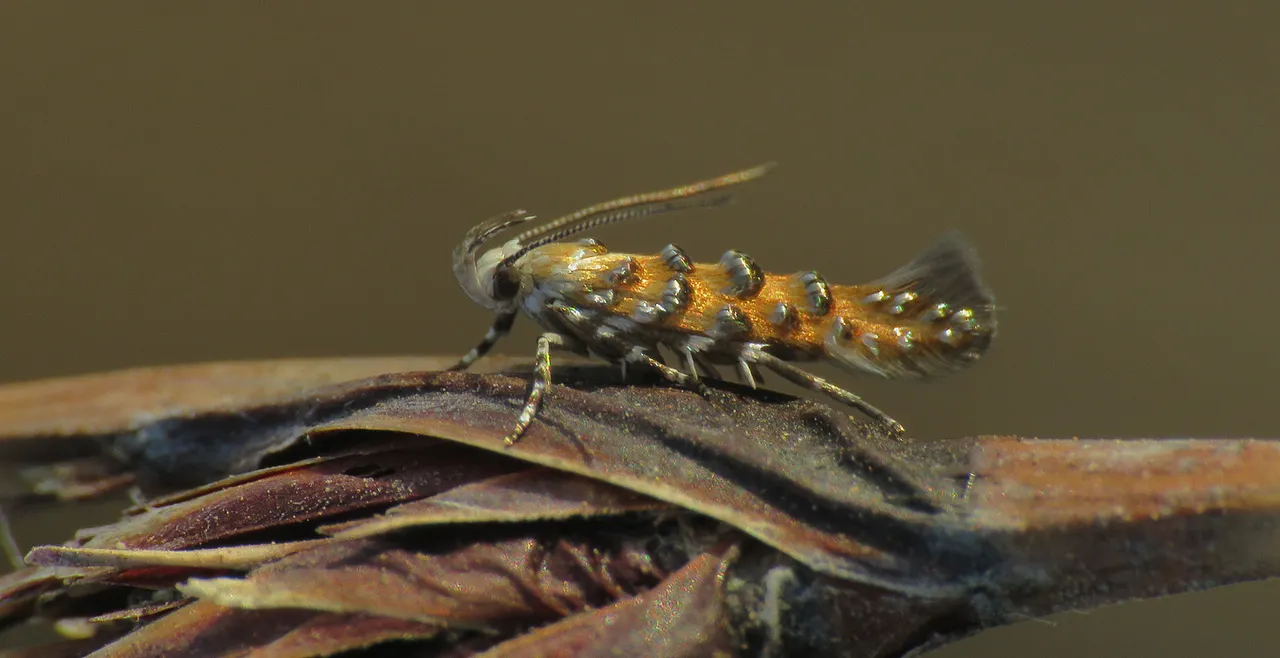
I saw this interesting moth only a couple of times in my life. I don't know how rare it is, but it's definitely very small and hard to notice on the dried-out vegetation.
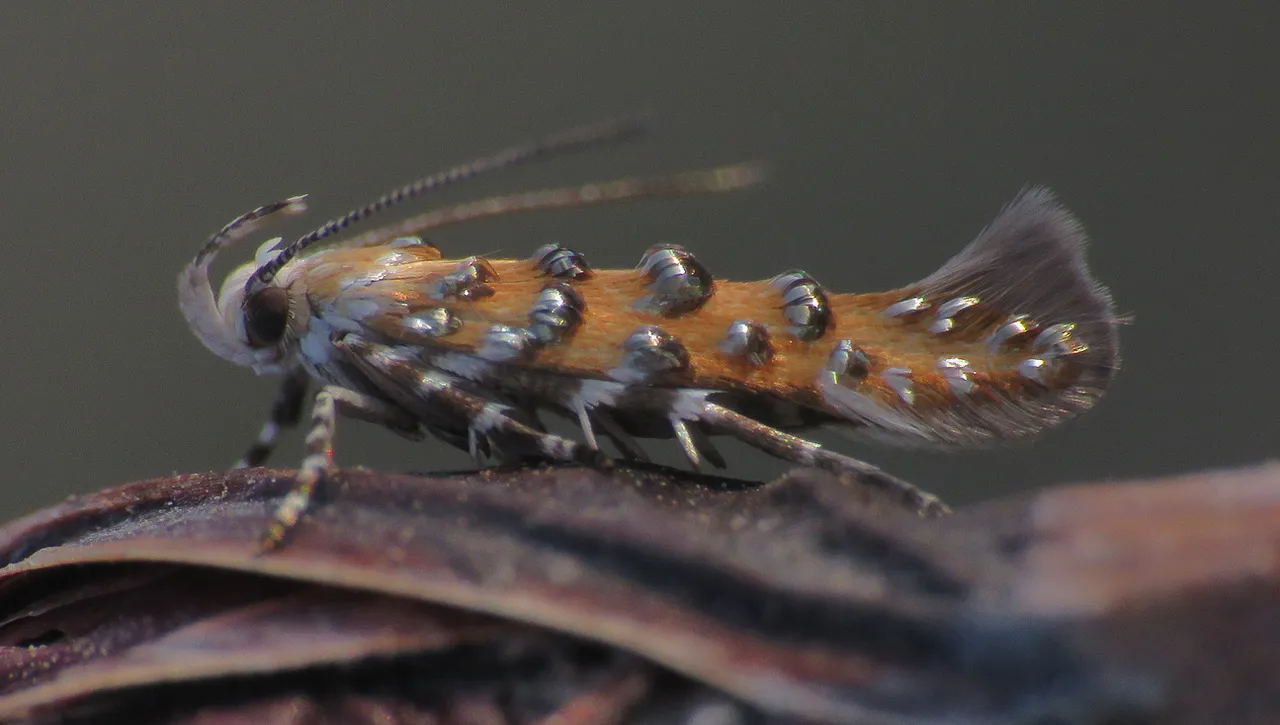
I like the look of those metallic scales very much. It looks like the wings are covered with droplets of liquid metal.
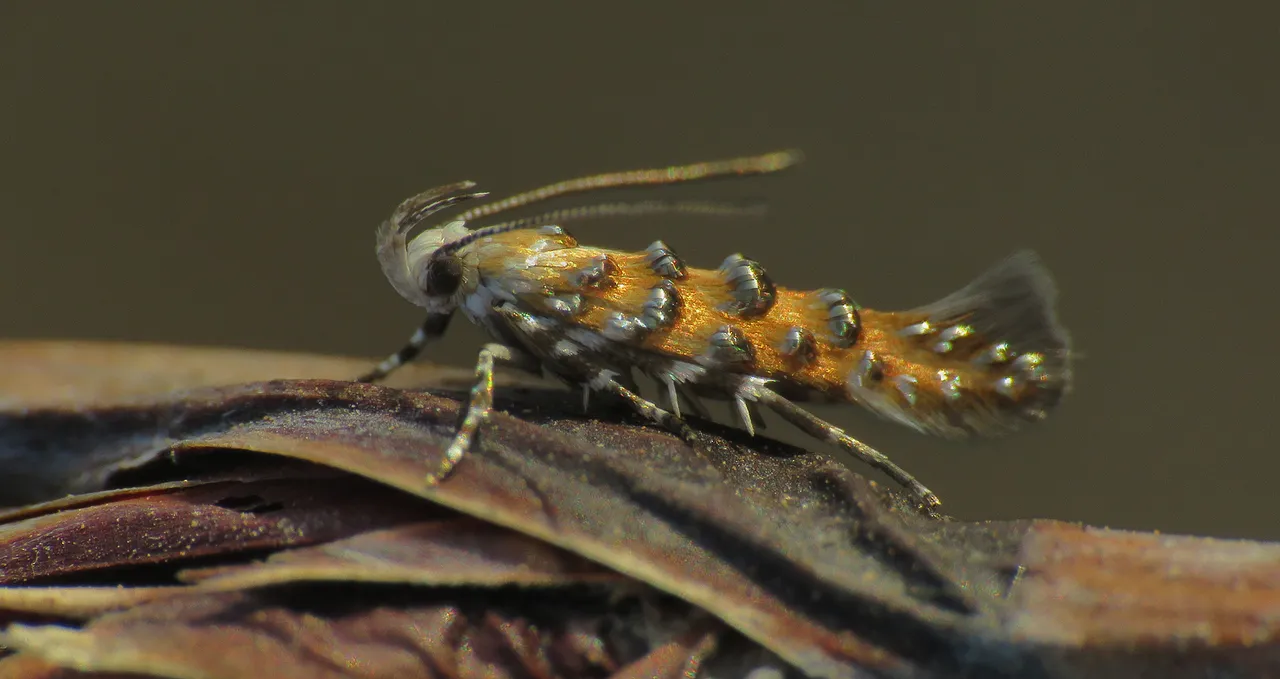
Eteobalea isabellella is the name of this beautiful species from the Cosmopterigidae family.
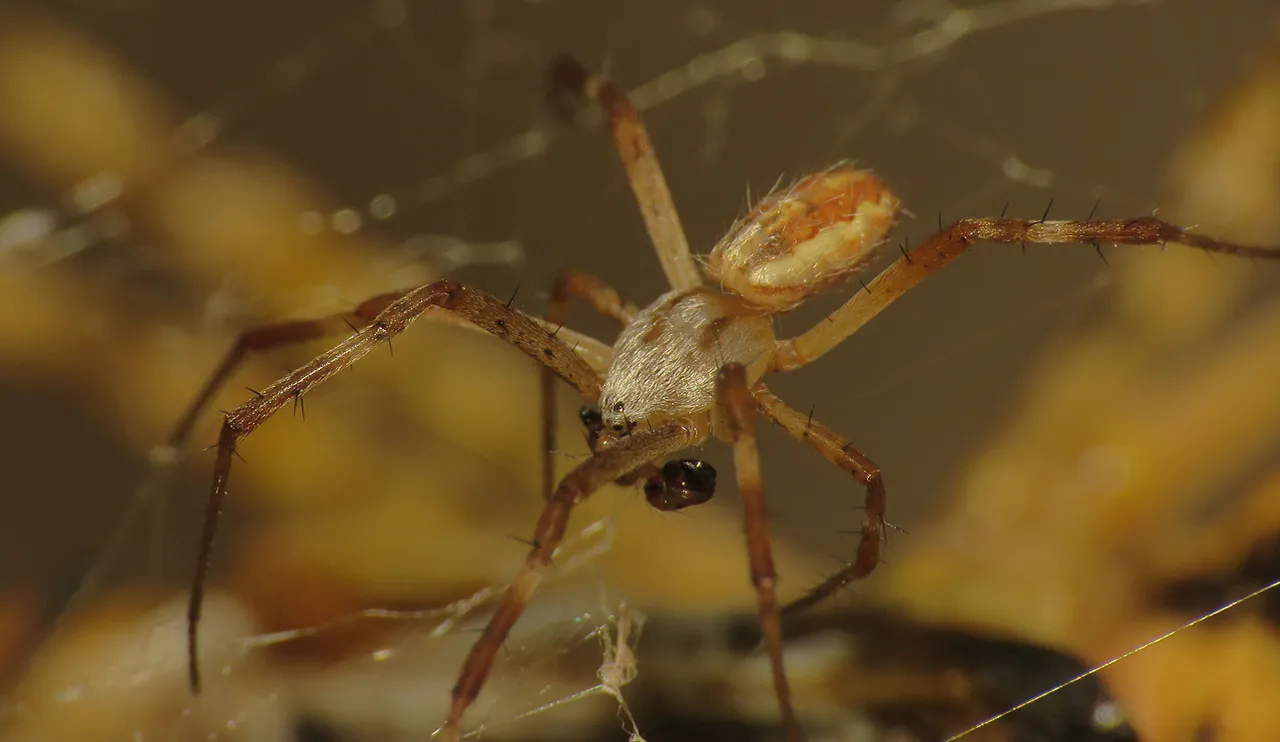
Here you can see the small male Argiope lobata spider.
It was photographed on the very large web ...
... made by the female.
While I encounter big, impressive females regularly, every summer, I saw the small male of this species only once ...
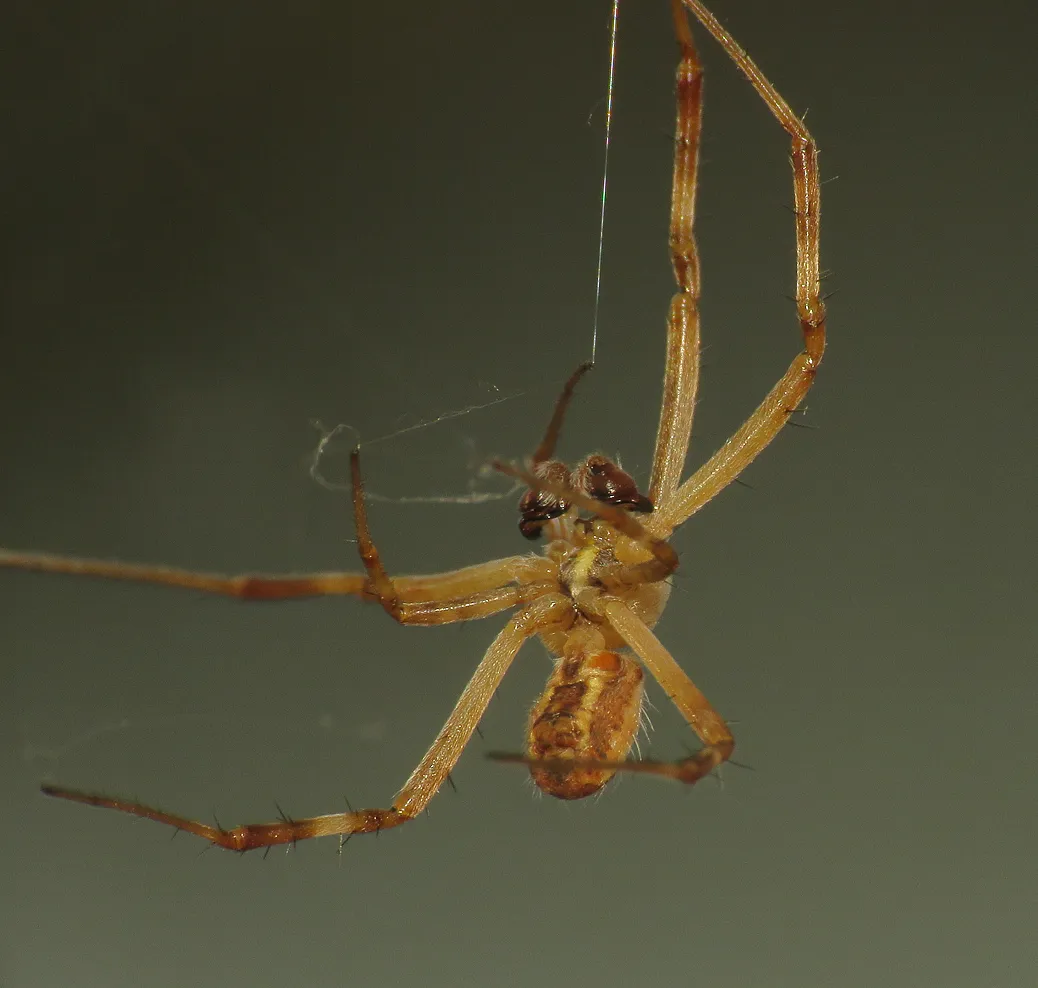
... last summer ...
... when these photographs were taken.
The female was eating a grasshopper enveloped in silky threads.
The male was slowly crawling all around the web. Argiope lobata it's a pretty spectacular species, in my opinion. The female is big, very interestingly shaped, and it looks kinda scary. But it's harmless. The spider shown in the following photograph is considerably smaller ...
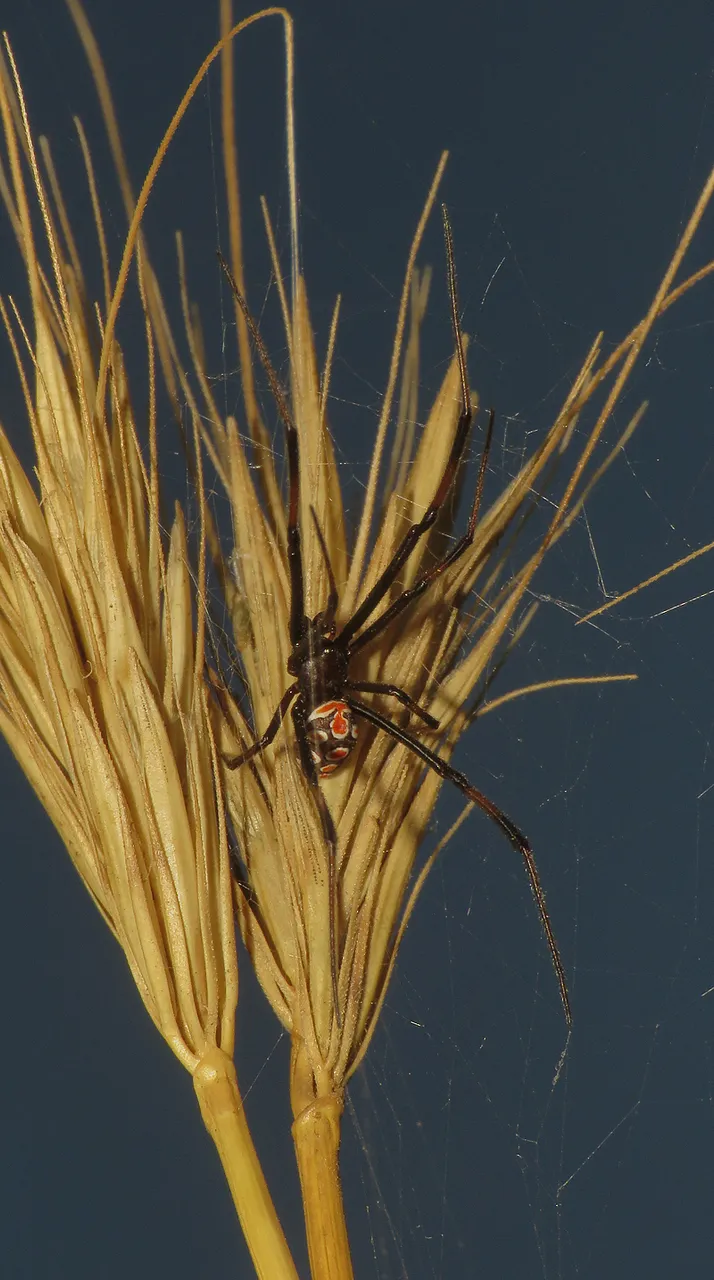
... but potentially lethal.
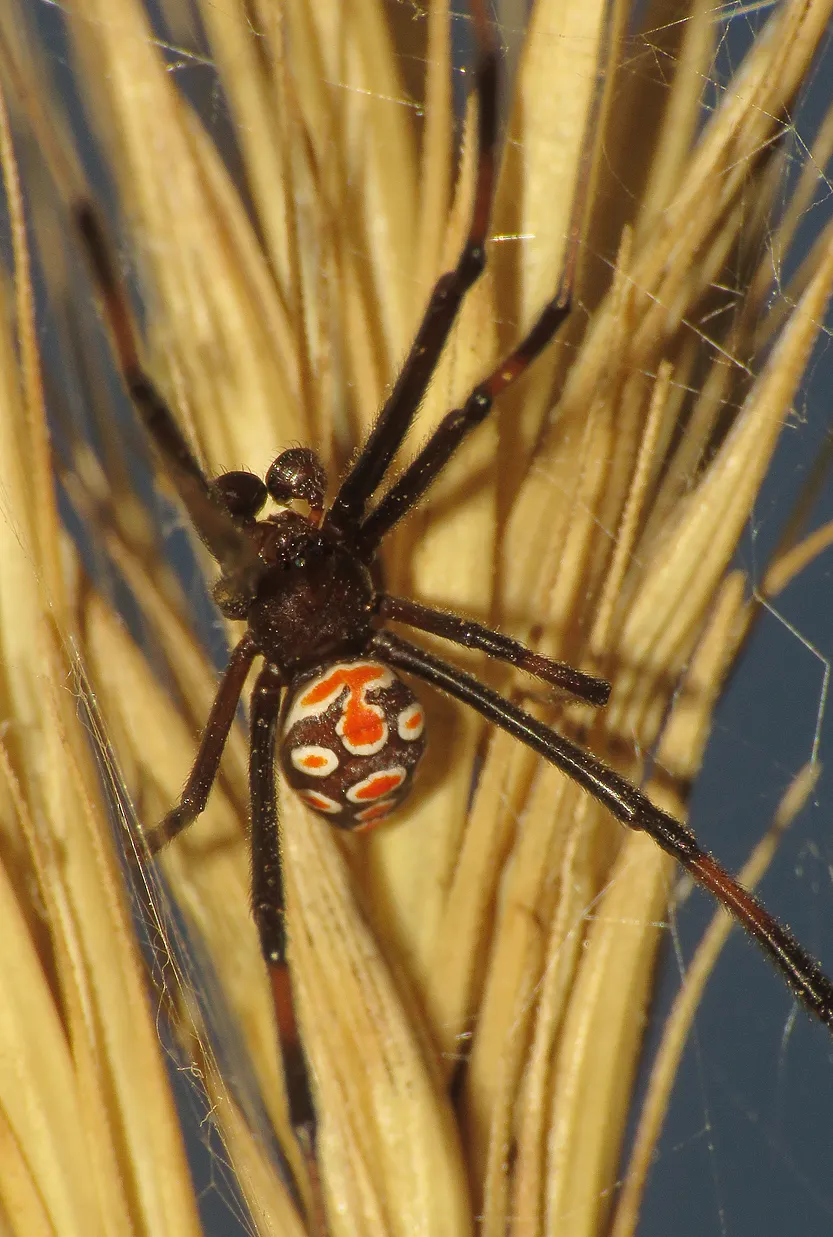
Latrodectus tredecimguttatus, commonly known as the Mediterranean black widow it's the most venomous species in this area. The venom causes severe pain, affects the central nervous system, and death can occur if it's not cured in time. This is the male of the species. Females have thicker abdomens and are generally bigger, but the difference in size isn't so big as in the case of the Argiope lobata spiders.
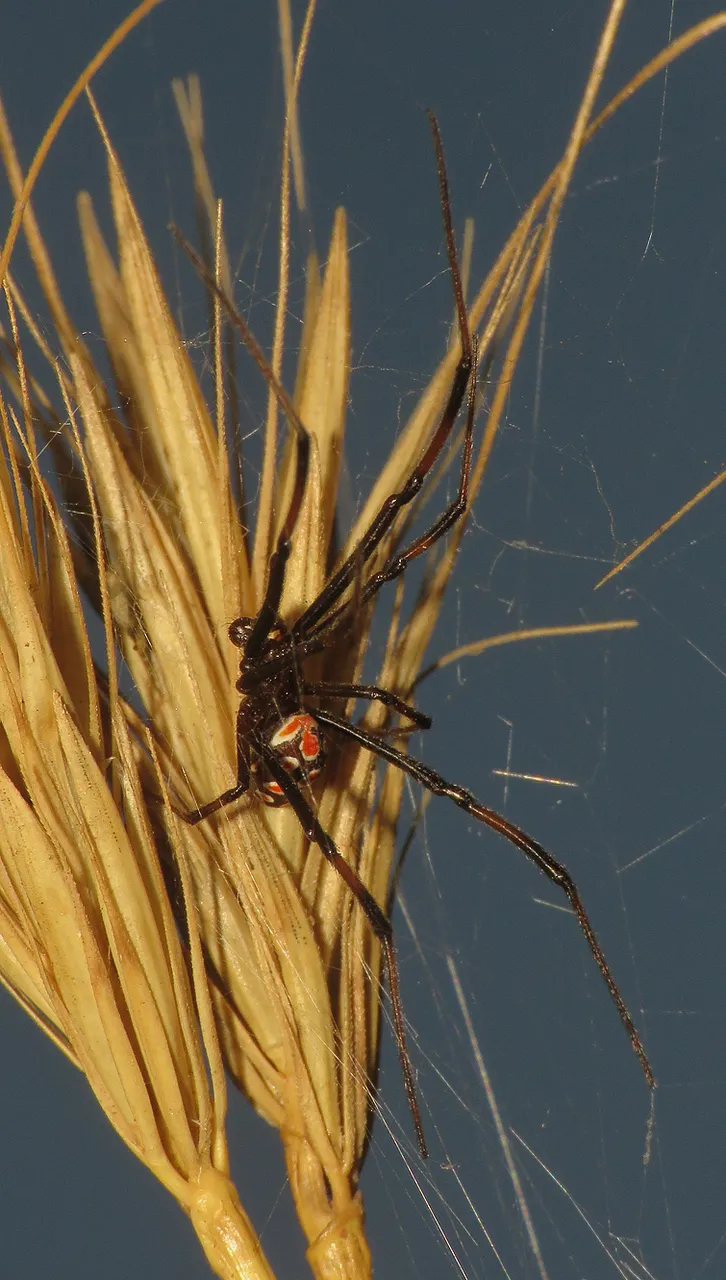
Some articles state that males aren't dangerous because their fangs cannot penetrate human skin. It could be. Quite possible. 🙂 But I have no intention to test the validity of that information. These spiders, both males, and females, usually mind their own business and won't bite if are not accidentally squeezed. They are also relatively rare here. I don't see them every year like the more common species of this seaside area.
Sometimes I'm not alone on the shore. Friends are swimming in the nearby sea while I'm chasing the small arthropods.
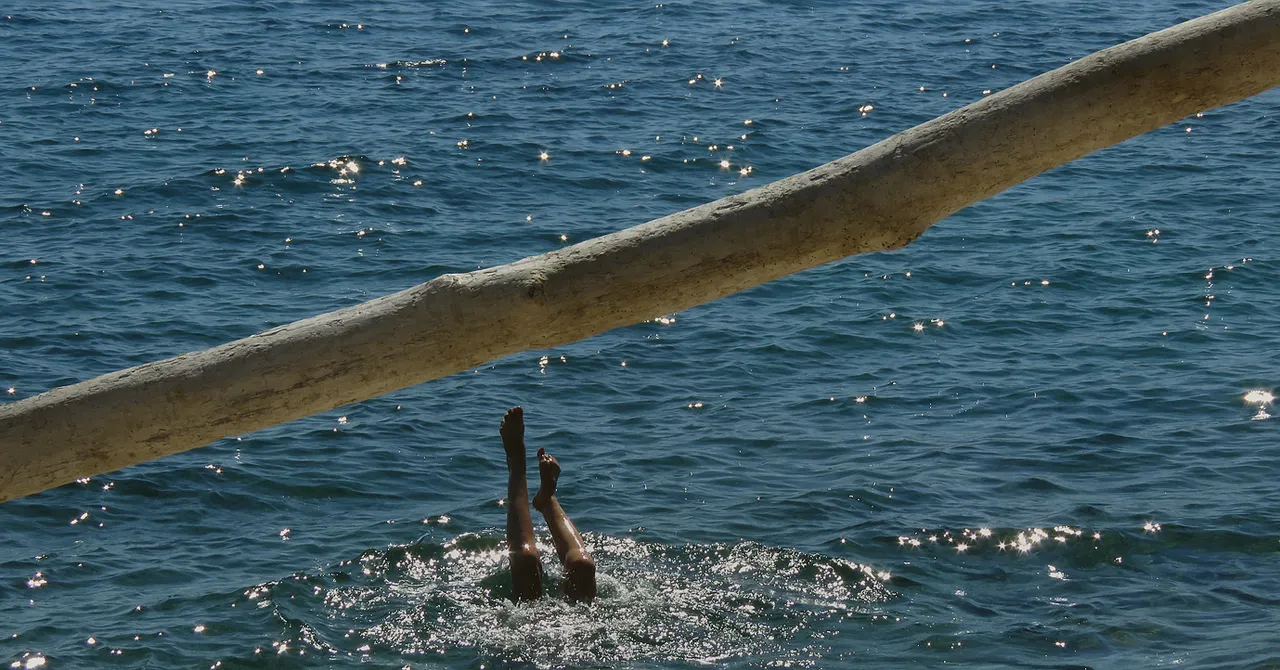
Here you can see the legs of one of those friends.
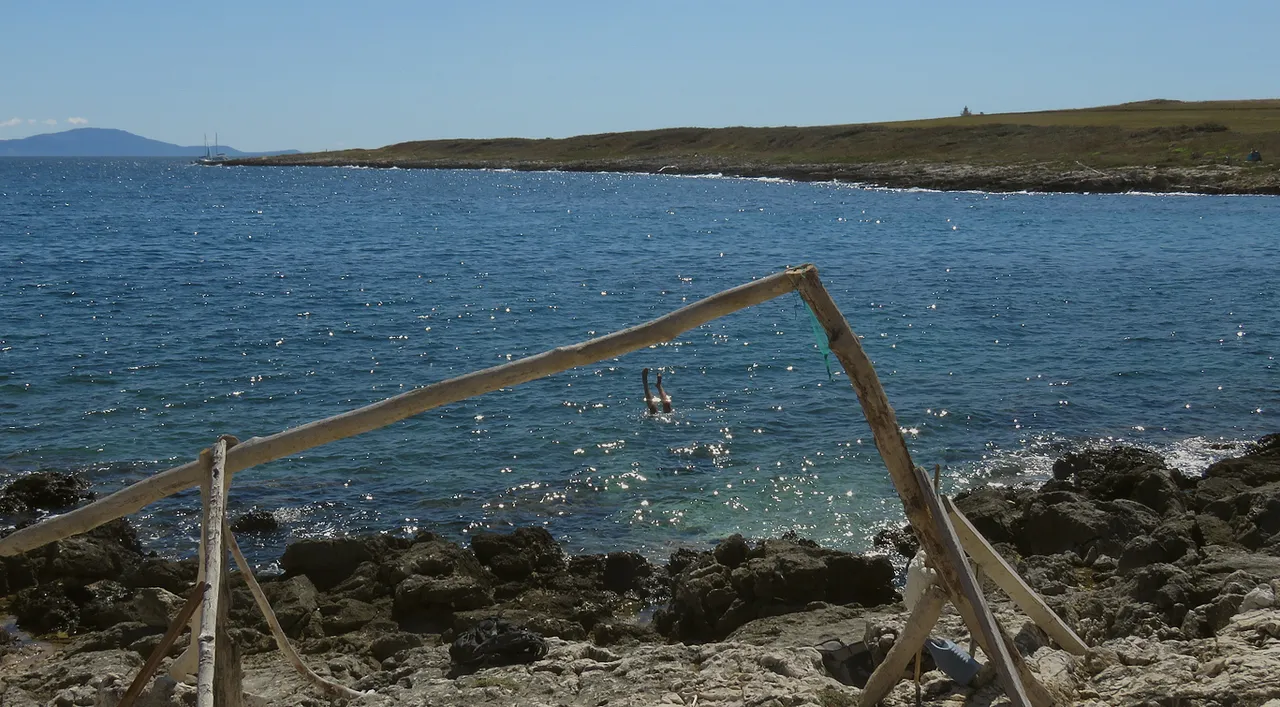
Someone created a simple, but pretty large construction using the driftwood that can be always found in nice quantities on this stretch of coastline.
That construction combined with the legs created a neat, little summer composition, so I took this series of shots.
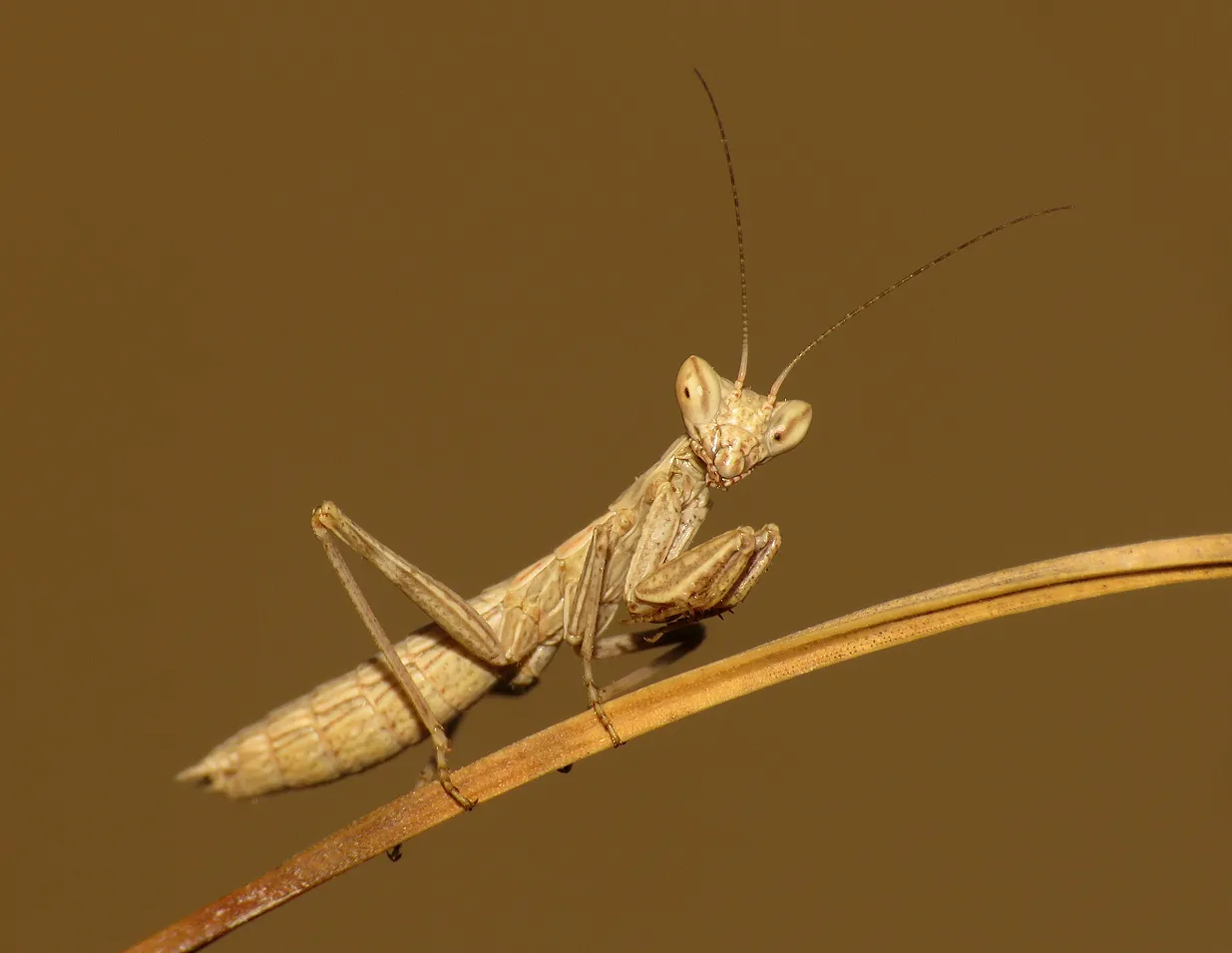
Mantises can be numerous on the meadows and on the vegetation that grows in between the coastal rocks.
Here you can see only the small, wingless nymphs ...
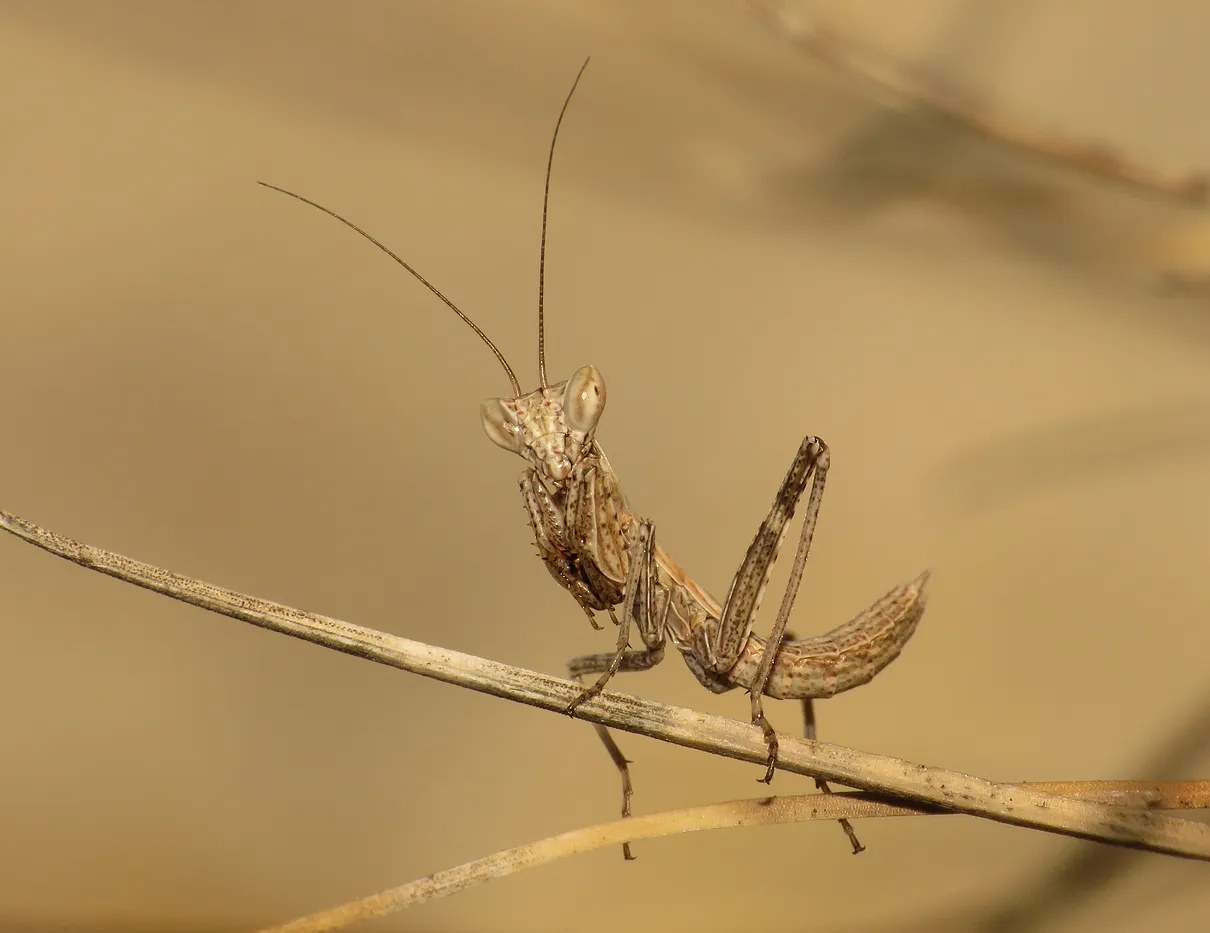
... of the Ameles spallanzania, a species commonly known as the European dwarf mantis. They are well camouflaged in this summer environment.
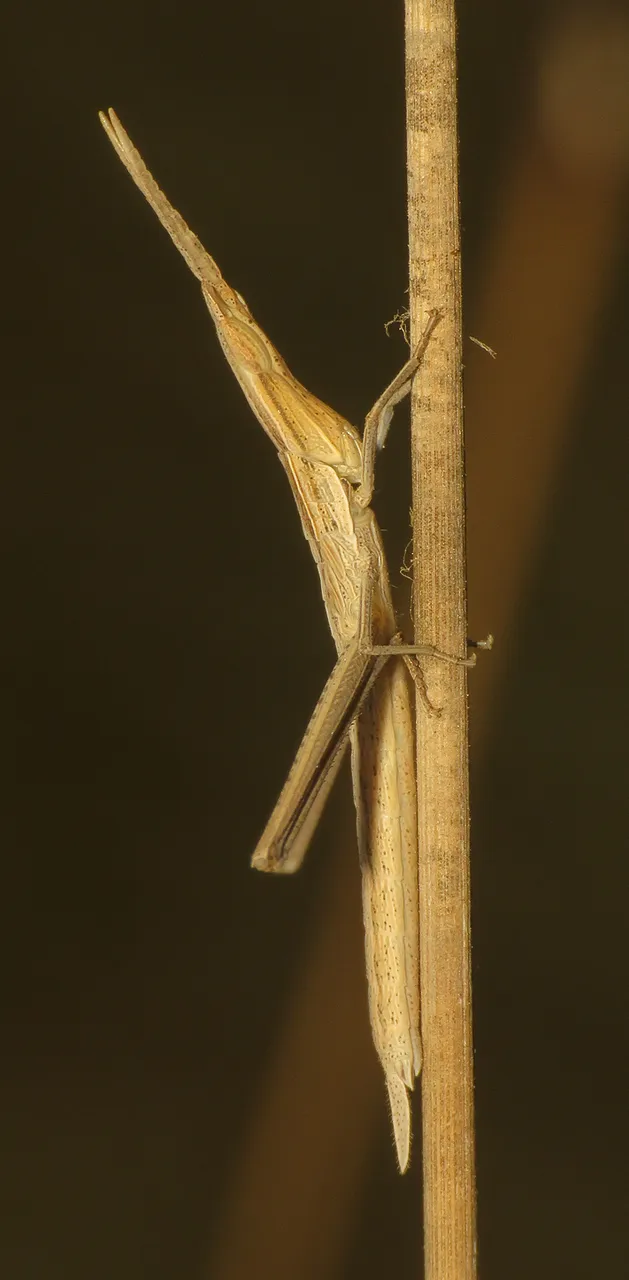
Here you can see another interesting example of mimicry.
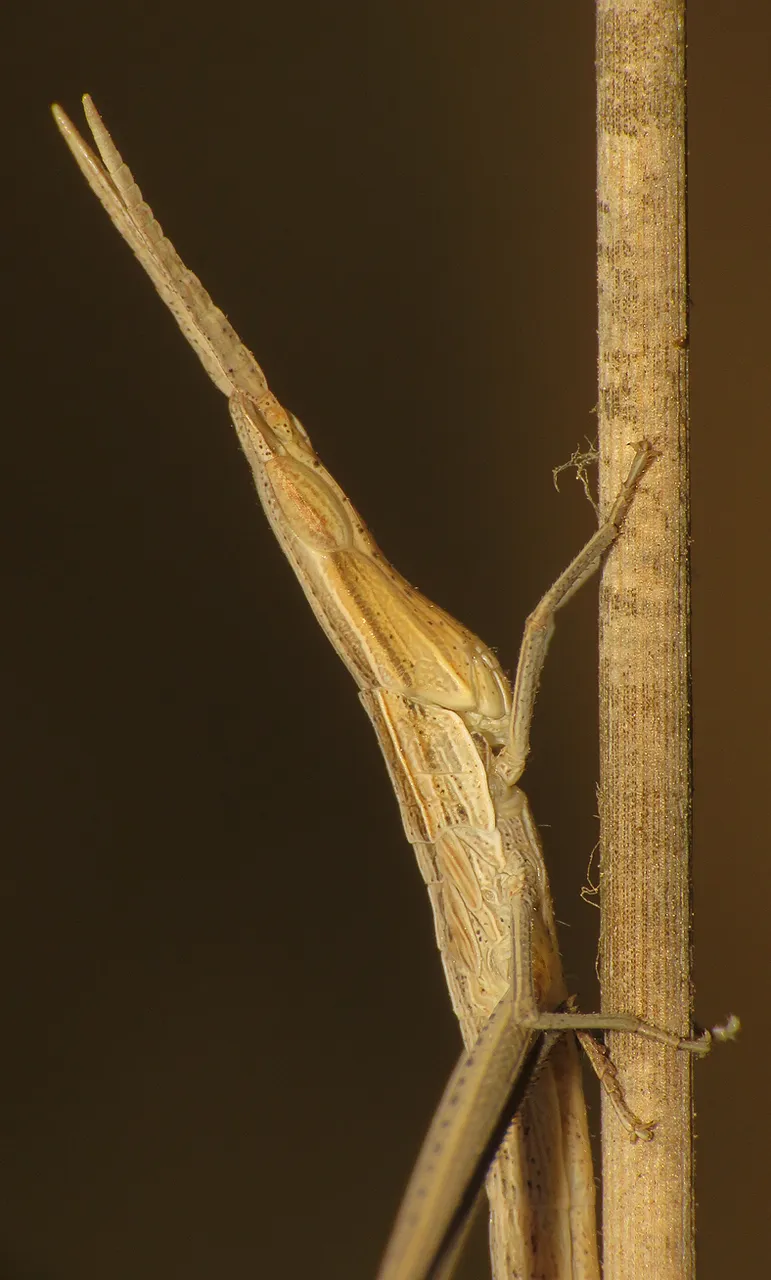
This is a grasshopper.
The young, wingless nymph of the Acrida ungarica mediterranea grasshopper. It's very hard to notice among the dry stems and leaves of various grasses.
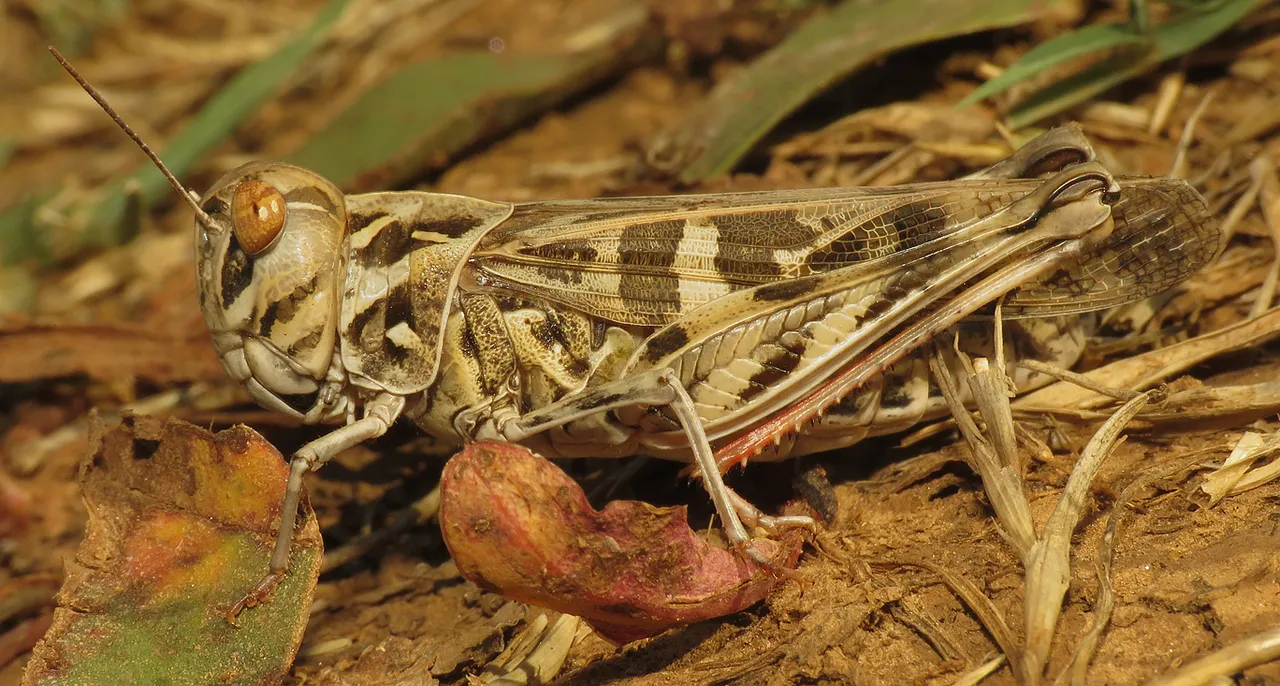
Oedaleus decorous grasshoppers are also almost invisible in their environment.
I rarely notice them before they jump before my feet.
They are usually found among the short vegetation and in patches of barren terrain very close to the sea.
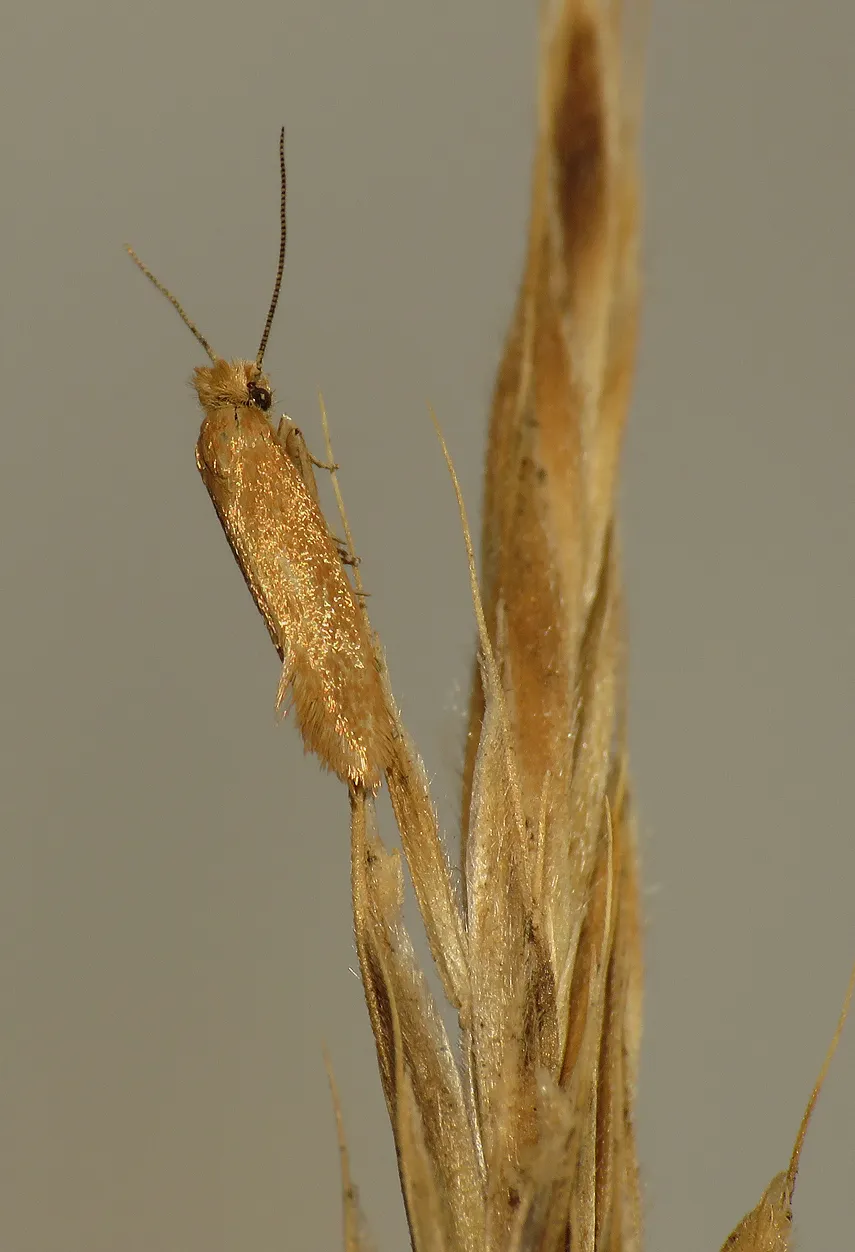
This small moth is yet another example of successful camouflage. It's barely recognizable on the ear of the grass. I don't know the name or anything else about this species.
Here you can see another boat. It's good to go out of the macro view from time to time and rest the eyes on the vast blue sea.
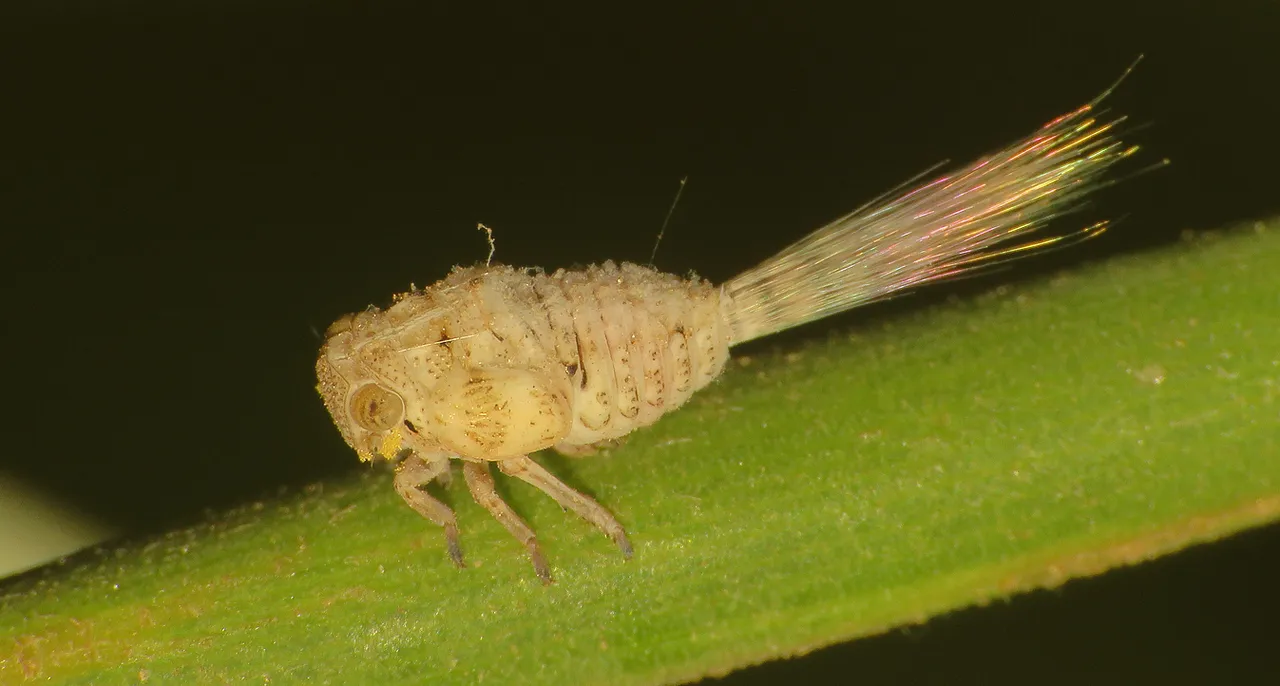
This strange, little creature with the interesting rainbow - tail ...

... is the nymph of the Agalmatium bilobum planthopper.
The nymphs of the Metcalfa pruinosa planthopper are covered with tufts of white wax ...
... that repels the predators and makes these little creatures look kinda otherworldly.
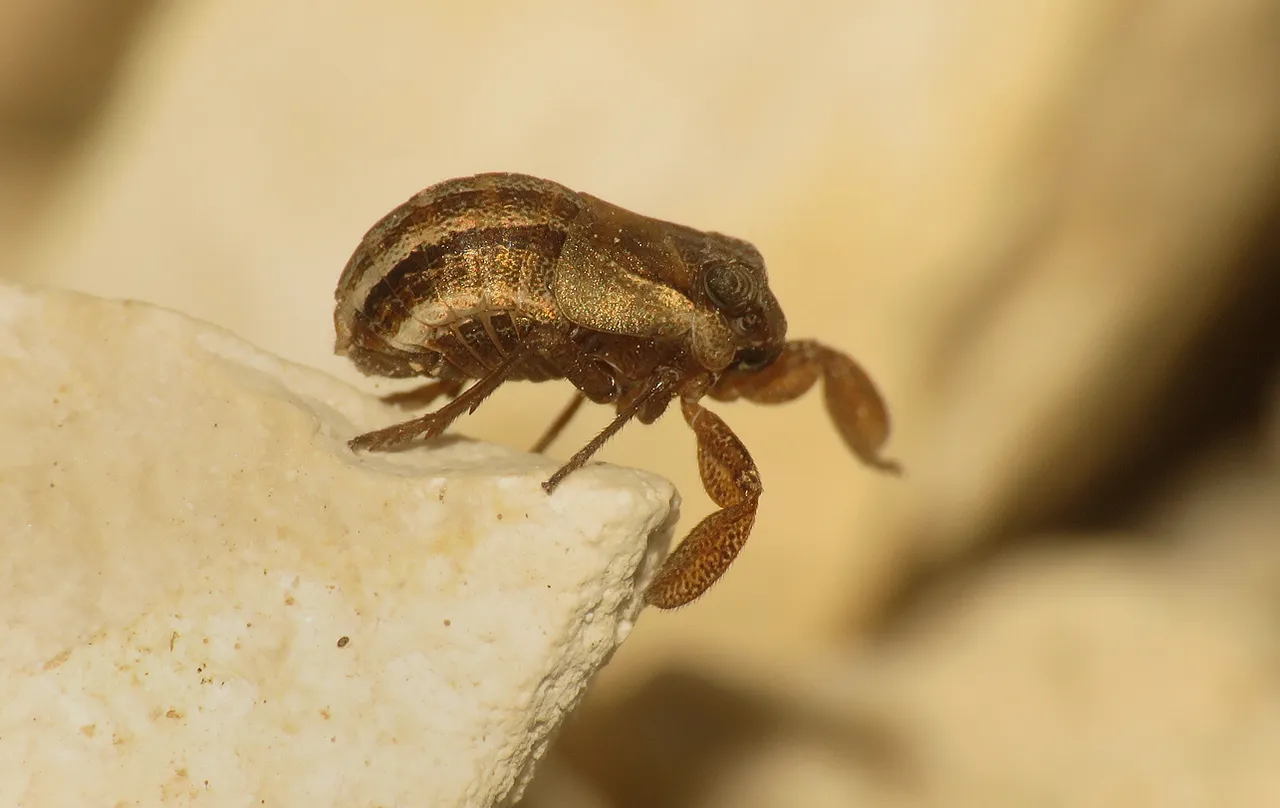
Here you can see an adult planthopper for a change ...
... the Caliscelis bonellii.
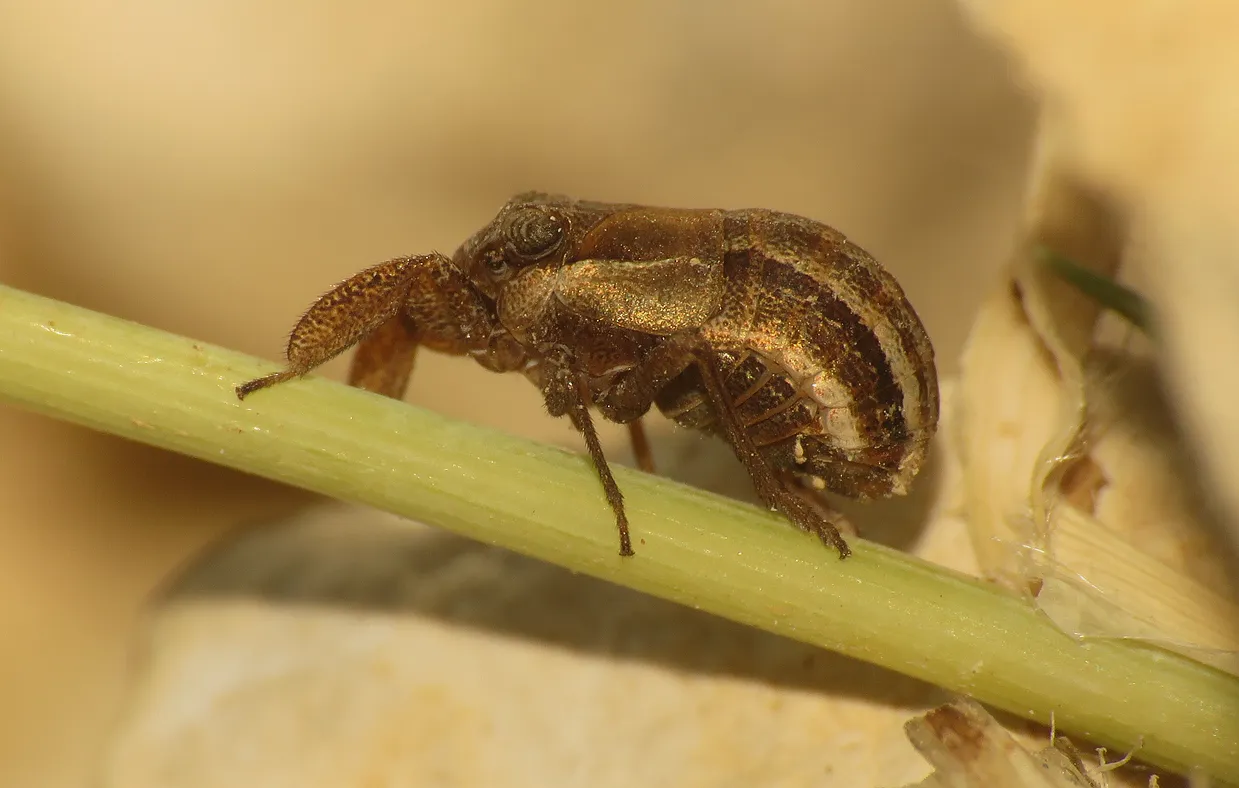
This is a species that I rarely encounter.
Caliscelis bonellii it's a species from the Caliscelidae family. Planthoppers from that family are commonly known as piglet bugs.
Here you can see only a female. males look considerably different, but I have no photographs to show you how exactly they look. Maybe this summer I'll get lucky and find a male Caliscelis bonellii to photograph.
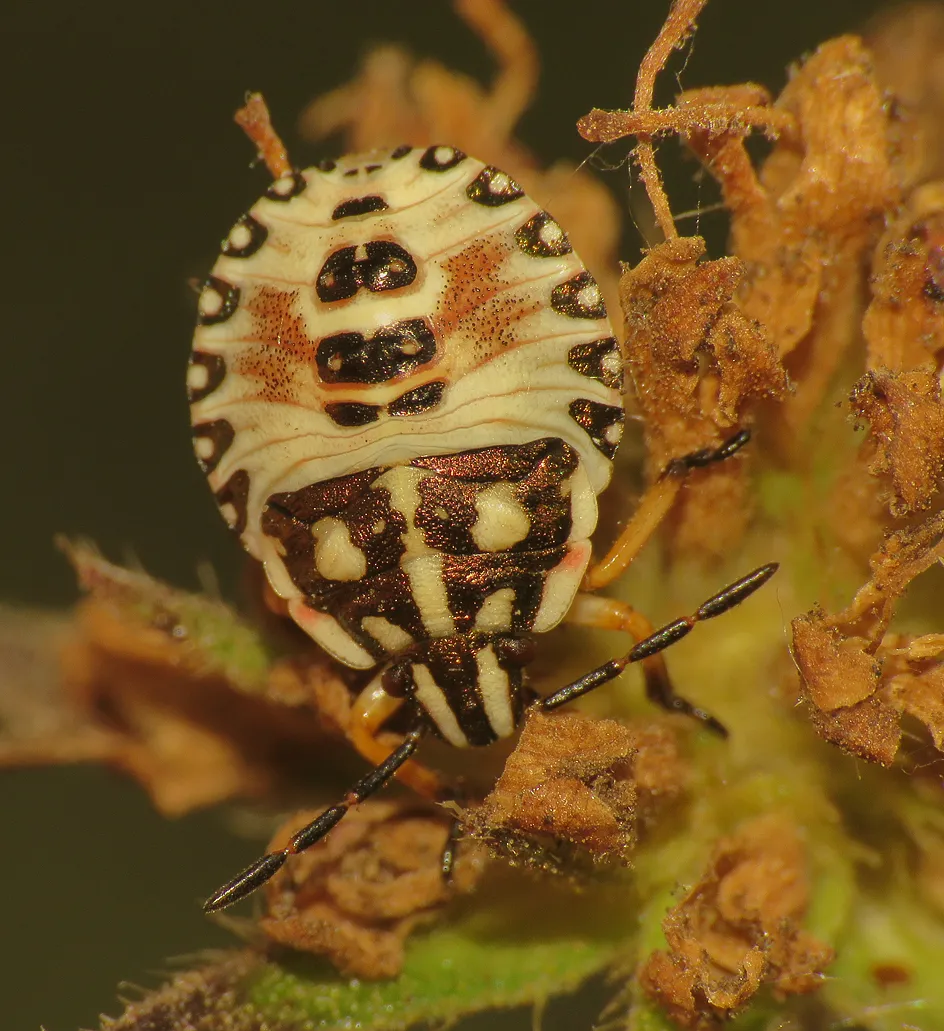
This is the nymph of the Carpocoris purpureipennis shield bug.
The nymphs of the Eurygaster testudinaria are well camouflaged while feeding on the seeds of the Plantago lanceolata plant. Eurygaster testudinaria is commonly known as the Tortoise shield bug.
Here you can see two happy summer people and a small dog that were paddling not far from the shore, while I was photographing the bugs on the desiccated vegetation near the sea.
On one occasion during that summer, I came across the Coscinia striata moth surrounded by minuscule pearls.
This female was laying the eggs. I never observed this scene in nature before that hot, summer afternoon.
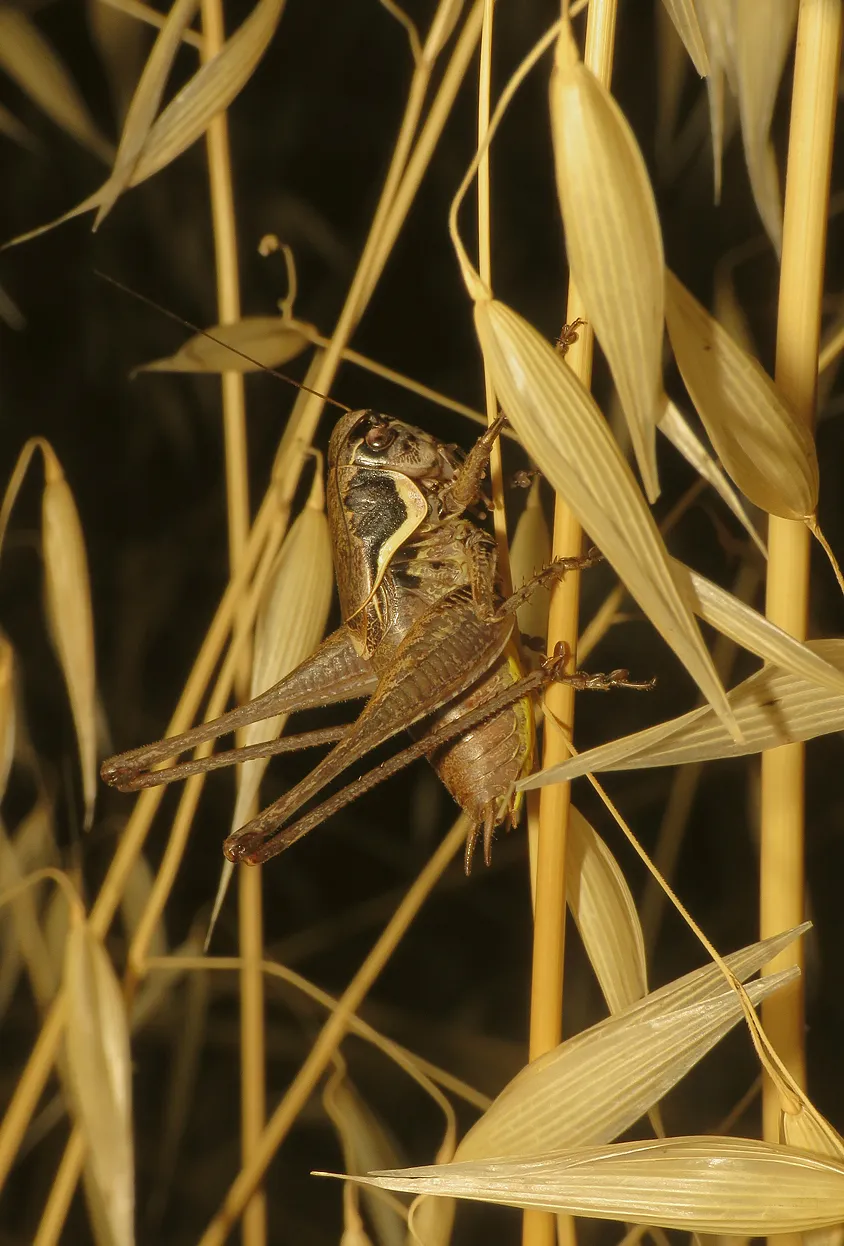
And now, with this Pholidoptera fallax bushcricket ...
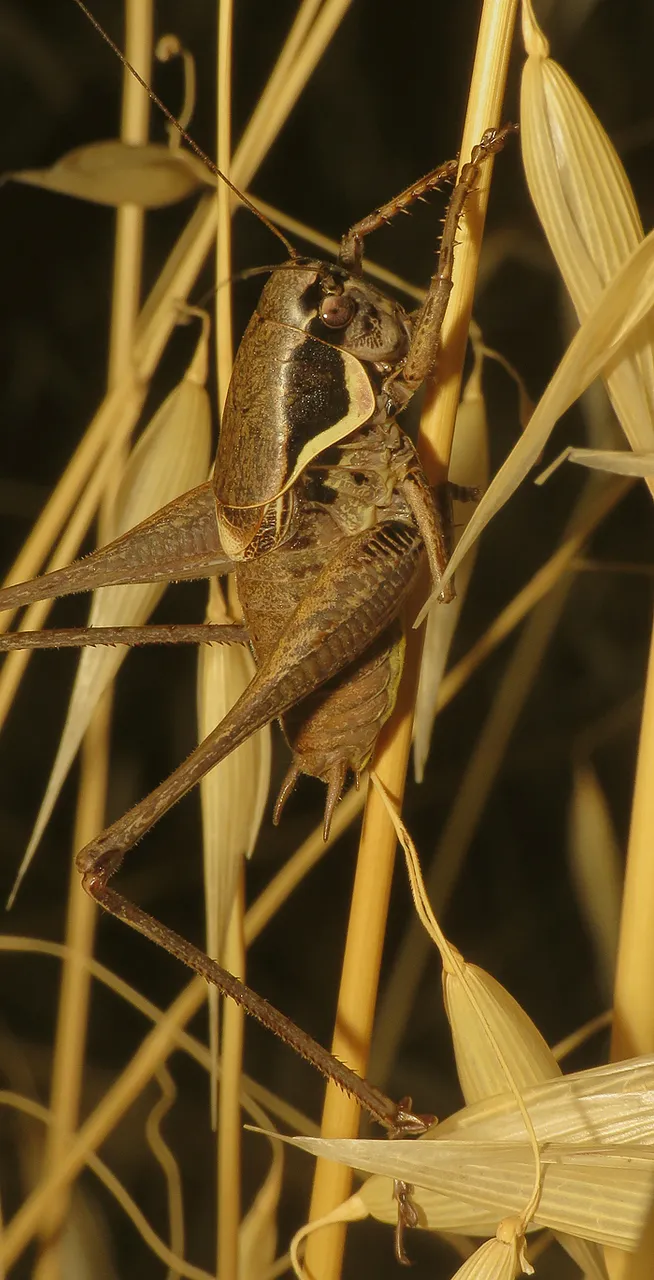
... is time to end the post.
HOPE YOU ENJOYED THIS LITTLE JOURNEY. AS ALWAYS HERE ON HIVE, THE PHOTOGRAPHS ARE MY WORK - THE END.







